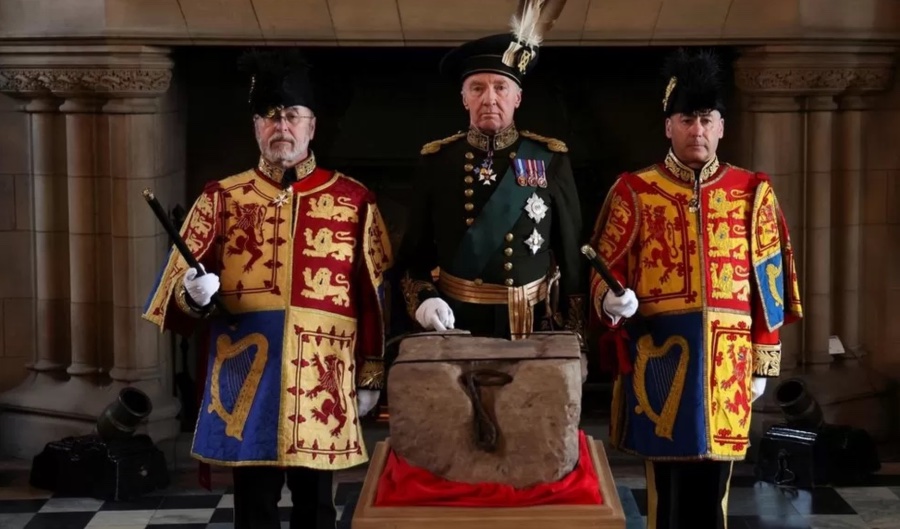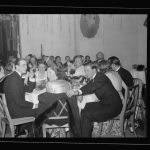After more than a quarter-century, the Stone of Destiny has departed Edinburgh Castle en route to London for the coronation of King Charles III.
The Stone of Destiny, also known as the Stone of Scone, has a fascinating history that spans centuries and nations. Seized by King Edward I of England in the late 13th century during the Wars of Independence, the 150kg (336lb) red sandstone slab was used for the coronation of Scots kings for hundreds of years. It was later made part of a carved oak coronation chair which has been used during the inauguration of 26 Kings and queens at Westminster Abbey since.
After being taken to England for 700 years, the stone was returned for permanent display in Scotland in 1996. However, it was agreed it would return to Westminster Abbey for any future coronation ceremony, such as that of King Charles III. The stone’s journey from Edinburgh Castle to London was a significant event, marked by a ceremonial procession led by the Lord Lyon King of Arms, the monarch’s representative in Scotland.
The Stone of Destiny is not just a symbol of Scotland’s monarchy but also of its fight for self-rule. In 1950, four students from Glasgow broke into Westminster Abbey and took the stone back to Scotland, where it reappeared months later in Arbroath Abbey, a place important to Scotland’s independence history. The stone was eventually returned to Westminster Abbey and placed back in the coronation chair where it was seen by millions during Queen Elizabeth’s televised coronation in 1953.
The stone’s dimensions, 66cm (26in) long, 42cm (17in) wide, and 27cm (10.5in) high, are impressive, as is the fact that it has survived for so many centuries. In preparation for its temporary departure to London, Historic Environment Scotland (HES), who care for the stone, worked with Police Scotland to ensure it could be transported safely and securely. The stone was transported in a special carrier constructed largely from Scottish oak, made by HES’s in-house joinery team.
After the coronation, the stone will return to Edinburgh Castle before making its way to Perth in 2024 to be housed in the new Perth Museum. The Stone of Destiny’s rich and varied history, from its use in Scottish coronations to its role in the fight for Scottish self-rule, makes it a fascinating and important symbol of Scotland’s past, present, and future.
Image Source:
- The Stone of Destiny: BBC news





